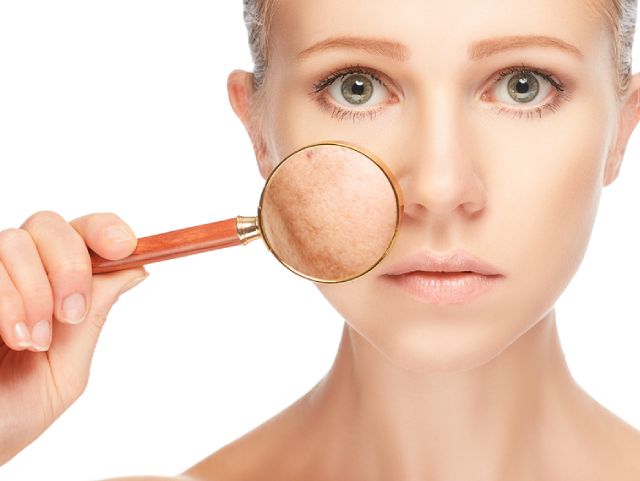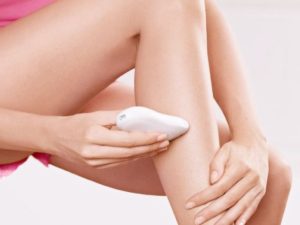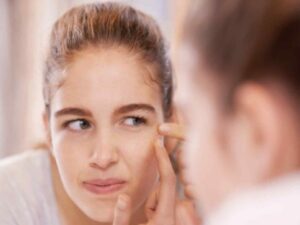Almost everybody struggles with facial pigmentation. Especially so, if you are female, over 20, and are a woman of color. There are over 20 different varieties of facial pigmentation and just as many causes. So if you thought that the sun alone is to blame, you are very wrong.
“Pigmentation” is the most common cosmetic ailment I come across in my practice. Of course, a good number of these patients are actually referring to their constitutional skin pigment (the color they were born with), which is obviously not a pigmentation “disorder”. Fortunately, I do see a swing in the trend. There are plenty of proud, dusky skinned women. And the aim of beauty is shifting from fairness to ‘flawlessness’.
There is a huge variety of facial pigmentation disorders. Freckles are the most common complaint among light skinned individuals. Melasma and little bumpy moles called DPNs (think, Morgan Freeman) are the most common complaint in brown and black skin. There are also some rare and uncommon causes of facial pigmentation. And then there are moles and birthmarks. However going into too much detail would be much too academic for a public information article.
So I will confine myself to the most common causes and types of facial hyperpigmentation. Hyperpigmentation is caused by the overproduction of pigment melanin in the skin. The pigment tends to accumulate over the years as a natural part of the ageing process. Since Asian, Hispanic, Mediterranean and African races already have greater amount of melanin in the skin, they are more likely to develop pigmentation disorders as they age. Considering that the majority of the world’s population comes under the category of ‘colored skin’, this would explain why skin lightening creams and cosmetics are a billion dollar industry!
Sunlight is the most common and well-known cause of pigmentation. Which is why, pigmentation problems are more common in people who spend a lot of time outdoors. Both ultraviolet radiation (from sunlight) and infrared radiation (from computer screens and microwave ovens) can contribute to pigmentation. Therefore, using a broad spectrum, medical grade sunscreen from an early age is a best investment you can make towards keeping your skin spot-free over the years to come. Using a sunscreen does not provide 100% protection though. It all comes down to the SPF you are using, how much you use, and how frequently you use it. Moreover, over-the-counter sunscreens do not actually provide the level of protection they claim to do. Sun avoidance is also required in order to truly protect yourself. But remember to expose your arms to early morning sunlight without using a sunscreen. This is especially important during the winters, to ensure adequate Vitamin D production in your body. There have also been concerns about hormonal imbalances and chemical toxicity from sunscreens. However, current medical consensus grades the benefits of a good sunscreen to far outweigh the risks.
Hereditary factors are another major player in facial pigmentation. If your parents suffer from dark spots and patches on the face, most likely so will you.
Using perfumed products on the skin can also lead to darkening of the skin. This has been noted with bleaching creams and paraben-containing cosmetics as well. This condition is known as Riehl’s Melanosis.
Prolonged use of skin lightening creams that contain chemicals like hydroquinone or resorcinol can leave a bluish-black discoloration on the skin, called Ochronosis.
People who have used hair dyes for several years, end up with dark patches near the hairline. This is due to a delayed sensitization reaction to the chemicals in the hair dye. This can happen even if you have been using the same, good quality, ammonia-free hair color for years.
Friction can also cause pigmentation and a lot of people don’t realize that. Most “frictional melanosis” occur over the upper mid back or arms from the use of bath brushes and rough loofahs. But athletes tend to rub their brow several times a day, and that can result in a dark forehead.
Hormonal issues can also cause pigmentation. Uneven skin tone is therefore a common problem in adolescence, pregnancy, menopause and amongst Diabetics. Having a sluggish thyroid gland can make your face look darker than your neck. Liver and kidney disease can also create hormonal imbalances in the body. This in turn can cause a full body darkening of the skin in patients suffering from long term kidney or liver ailments.
Other serious medical disorders like Addison’s disease (effects the adrenal glands) and hemochromatosis (excess iron in blood) can also cause hyperpigmentation. Pigmented spots may appear on the nose after recovery from Chikungunya fever. Fortunately, they disappear on their own when the patient recovers from the illness.
There is a category known as ‘post inflammatory pigmentation’. This is when a pimple, any skin disease, cut, scratch or burn heals to leave behind a dark stain as a reminder. This is also the main reason why dermatologists are always telling their patients to not pick at their zits and wounds. It is not the same as a scar, which is permanent and will not disappear with time.
Certain medications can cause facial pigmentation as well. Examples include amiodarone (given for irregular heartbeat), minocycline (to treat acne), antimalarial drugs, silver, arsenic and some anti-depressants. Birth control pills can cause Melasma, And certain painkillers and antibiotics can leave oval grey patches on the lip which can take several months to disappear.
As cliched as it sounds – stress, smoking, pollution and too much sugar in your diet can also wreck your skin.
While freckles can be cute and do not cause as much embarrassment, Melasma can leave a woman distraught. Unsightly brown blotches of pigmentation appear on the cheeks, and sometimes on the nose and upper lip as well. Seen mostly in women, this condition can be hereditary or triggered by the sun or hormones. Pigmentation caused by hairdyes, cosmetics and friction are generally confined to the forehead. Hormonal pigmentation, also known as atypical acanthosis nigircans, is generally seen on the cheekbones or as a dark ring around the neck. A lot of dusky South-East Asian women have under-eye dark circles which trail off from the outer corner of the eyes like a tear drop rolling down. This generally begins at puberty as very faint lines. But the pigmentation can deepen as the woman ages. These are called Pigmentary Demarcation Lines and are almost impossible to treat. The most devastating of all, would be a condition known as Lichen Planus Pigmentosus (LPP). This condition is particularly common among the people of India and the Middle-East. The problem begins in middle age. The face and neck develops a dark brown or slate gray hue. It can also begin as multiple dark spots which all seem to pool together over time, to spread across the facial skin. LPP can spread to the trunk and arms as well. The pigmentation lies in the deeper layers of the skin and is nearly impossible to treat using skin lightening creams. Dermatologists try to control and arrest the spread of the disease using oral medications. Once the disease has burnt out, the residual pigmentation is best treated using a Q switched Nd:YAG laser.
So as you have gleaned by now, facial pigmentation can be varied, complex and sinister. A skin biopsy is often necessary to nail the exact diagnosis and study the depth of pigmentation. However, most patients refuse to get the biopsy done, as it may leave a small 3 mm scar on the skin of their face. This creates additional hurdles for the dermatologist.
If allergies are suspected, then an allergy patch testing may be ordered. Avoiding the allergen (perfumes, hair dyes etc) can rectify your pigmentation problem.
Unfortunately though, most pigmentation problems cannot be permanently cured. Facial hyperpigmentation is caused by multiple factors; which is why a single line of treatment may not work, and no treatment can completely halt the process of pigment build-up. This is another challenging facet of treating disorders of pigmentation. Doctors and patients often end up frustrated with each other. Patients go from doctor to doctor looking for the promise of cure. Their emotional vulnerability makes them easy prey for quacks who “guarantee” results. Skin lightening creams, chemical peels and lasers can actually worsen the pigmentation or create other skin problems if they are performed by inexperienced or unqualified doctors. These complications include further darkening of the skin, burns, scars or permanent bleaching of the skin. Sometimes good doctors end up making horrible mistakes because they got too emotionally invested into their patients. These patients then harangue the doctors to try more and more aggressive treatments, often by manipulating the doctor’s sympathy, guilt and ego.
With most pigmentation problems, the aim of treatment is to improve the pigmentation, and to keep the problem under control. Take freckles for instance. A good sunscreen can fade away some of the light brown freckles. And minimize recurrence. Skin lightening creams can help but often leave the patient with uneven skin tone. The cheeks may look fair from long term use of bleaching cream over the freckled areas. While the forehead, upper lip, chin and neck may end up looking a few shades darker. Chemical peels give you faster and better results compared to bleaching creams. And laser treatments are the best bet towards complete removal of the freckles. Unlike a cream or a peel, the laser can be directed specifically over the freckles, while leaving the normal skin (in between the freckles) unaffected. However, freckles can and WILL reappear. Sometimes after a trip to the beach. Or as you get older. Or even after a pregnancy. So you and your dermatologist will have to continue to work together over the years, in order to maintain the results of the treatment and keep excess melanin at bay.
Some conditions like Macular Amyloidosis, Becker’s Nevus (a type of dark hairy birthmark) or LPP can never really be treated. A responsible dermatologist must be honest with their patients and know when to say ‘No’. A good patient on the other hand, will adhere to their doctor’s recommendations on how to use a treatment and only use it for as long as it has been prescribed. Certain steroid and hydroquinone-containing bleaching creams work brilliantly. However they can only be safely used for a few weeks at a time. If you use them any longer, they may end up leaving permanent side effects on your face. So as a good patient, you must really resist the urge to buy those prescription creams every time there is a wedding or a vacation coming up. Camouflage and cover-up make up must become a lifestyle choice for you. It is a simple, side-effect free ‘quick fix’ for your damaged self esteem. And never leave home without your sunscreen!




